Where and when: Colca Valley, Peru, 2 June 2023,
0700: Leaving Jose Antonio hotel in Puno. Today, we are heading to the Colca Valley, to the East of Puno.

Our journey takes us across the “altiplano”, the 4000m high altitude plain stretching from Puno to Southern Peru.

Along the way, there are many herds of llamas and alpacas which are domesticated and farmed. The farmers let them out to graze in the morning and collect them in the evening.

This is also the main road from Puno to Arequipa and beyond. There are many commercial trucks on the road, transporting minerals to the coast for shipping. Many of these trucks travel in convoys, headed by a small truck or car carrying a sign indicating how many vehicles are in the convoy.

The railway runs parallel to the road in most places. The train is used mostly for transporting goods and minerals. Passengers services are only once a week and is aimed at tourists.
First stop is at Lake Lagunillas, which is great if you are a bird watcher. There are many flamingos on the lake and its shores.
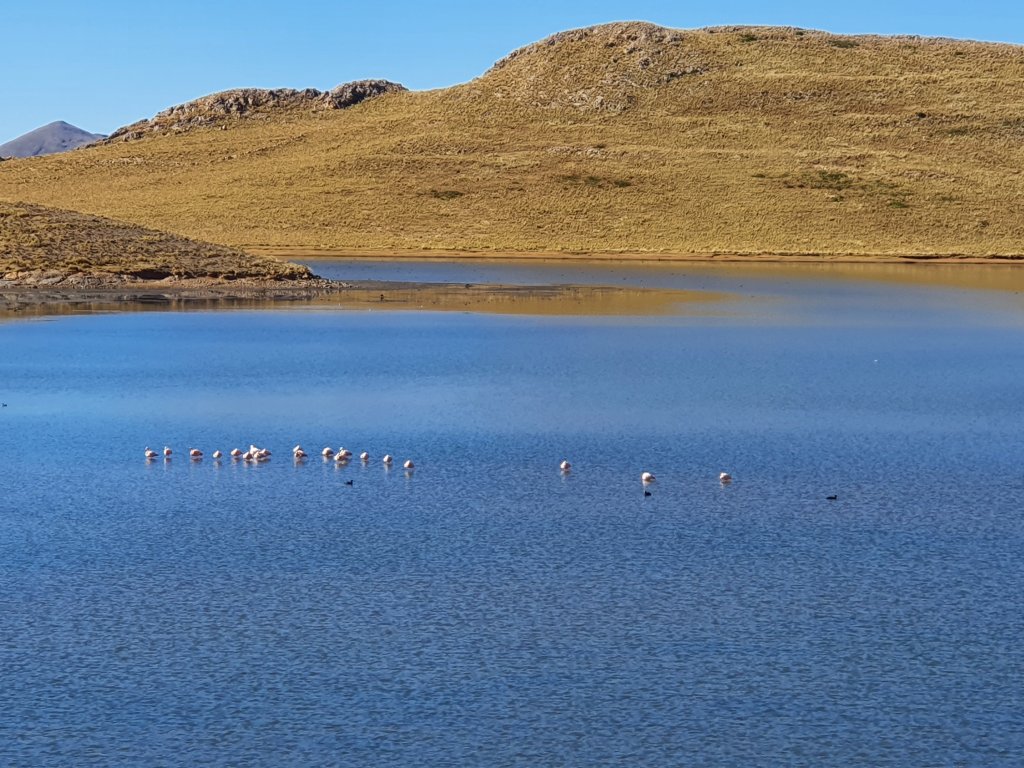
The next stop is at a viewpoint at Mirador Lagunillas, at 4444m above sea level.

1050: Soon we start to travel through the Salinas and Aguada Blanca National Reservation. Our next break is where we deviate from the road to Arequipa and turn towards Colca Valley. From here you can see two mountains, both of which are dormant volcanos.
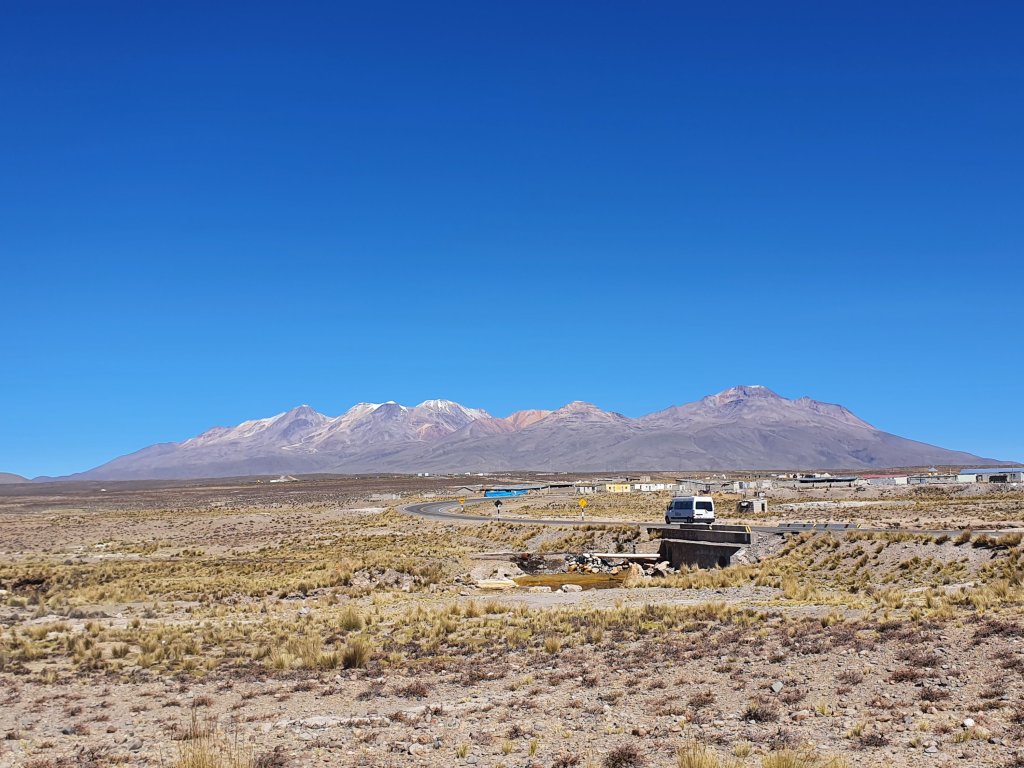
On our way again, we start to see many Vicunas. They are from the Camelia family, but Vicunas are wild and not domesticated like llamas or alpacs. There are about 25000 Vicunas in the Salinas and Aguada Blanca reserve. Many live in herds of one male and several females. Their fur is even more priced than Alpacas, due to higher quality and rarity. All the Vicunas in the national parks are rounded up once a year, in a large civil and military operation. They are health checked and sheared, and set free (until the next year). Despite efforts to preserve them, they fall prey to poachers and loss of habitat, so the number of Vicunas is declining.
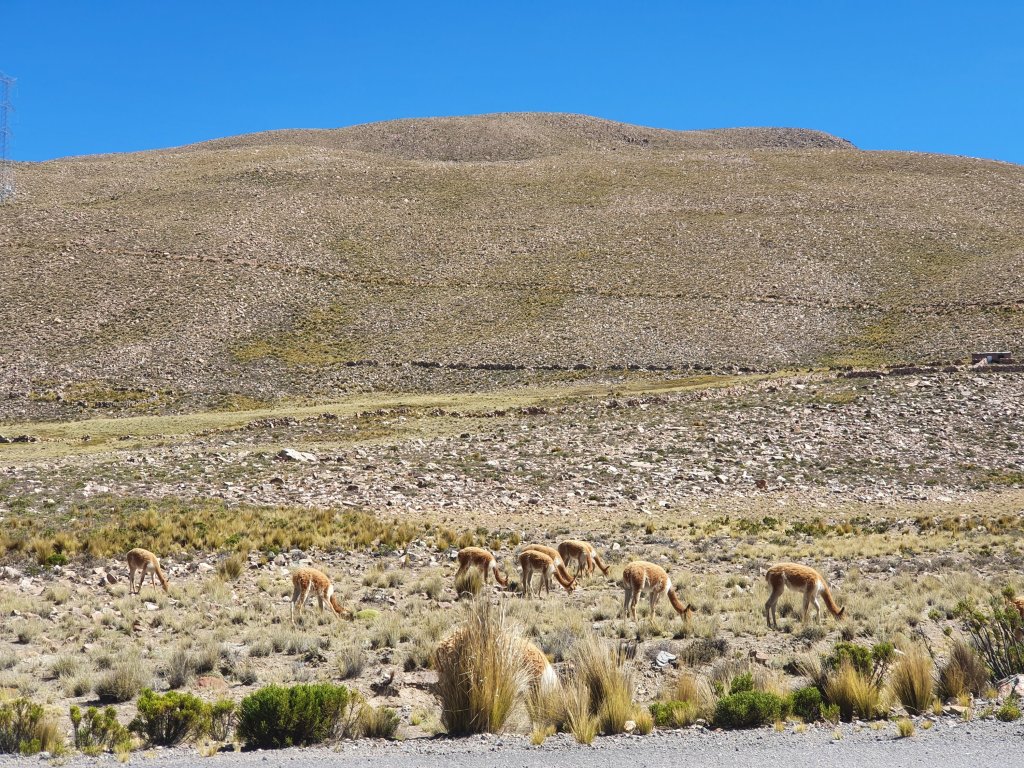
Whilst most of the altiplano is pretty dry, some parts of the altiplano have springs and is quite green. Many farmers use such areas for grazing their herds of llamas and alpacas.

We also see Sabancaya volcano in the distance, which has started to produce a lot of smoke. In March 2023, Sabancaya erupted to life with a 3.5km column of smoke and ashes. Since then it has been smoking at a steady rate – but according to our guide, this is the most active he’s seen it for a few weeks.

1220: Our next stop is a view point to see a number of Volcanos. It is also the highest point of our trip at 4910m. From here, you can see Sabancaya among other volcanoes.
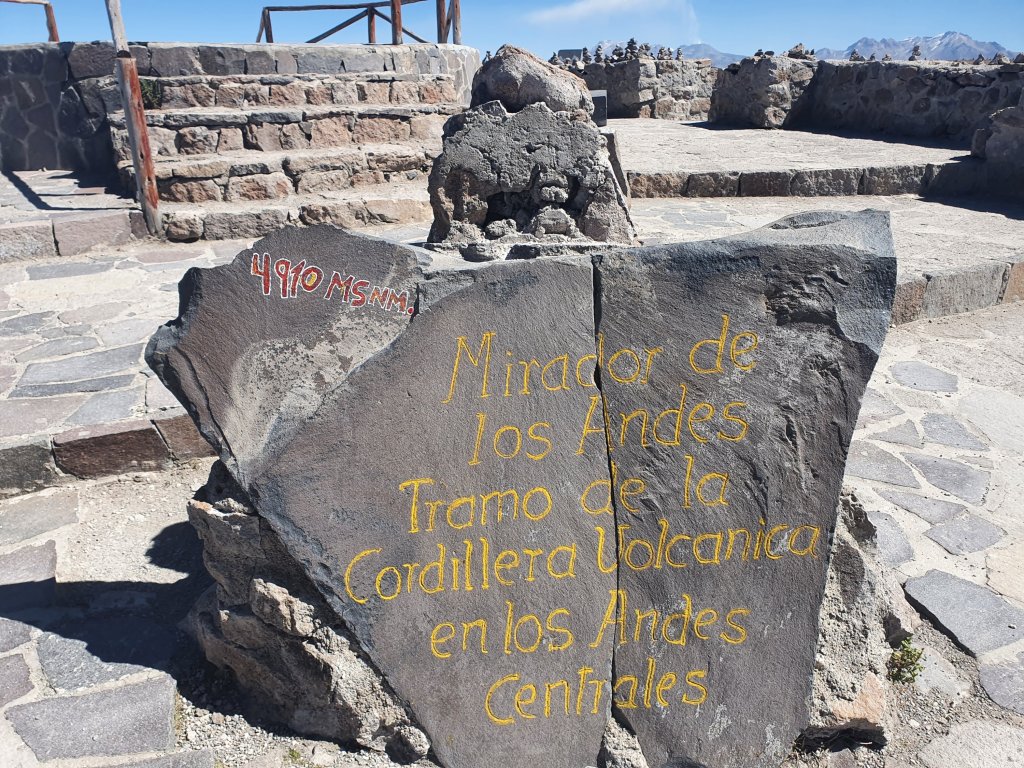



1300: Next we stop at viewpoint of the Colca Valley. From here you can see the town of Chivay, which is the biggest town in the Colca region. Altitude here is around 3650m, so we have climbed down about 1300m in the space of 40 minutes.
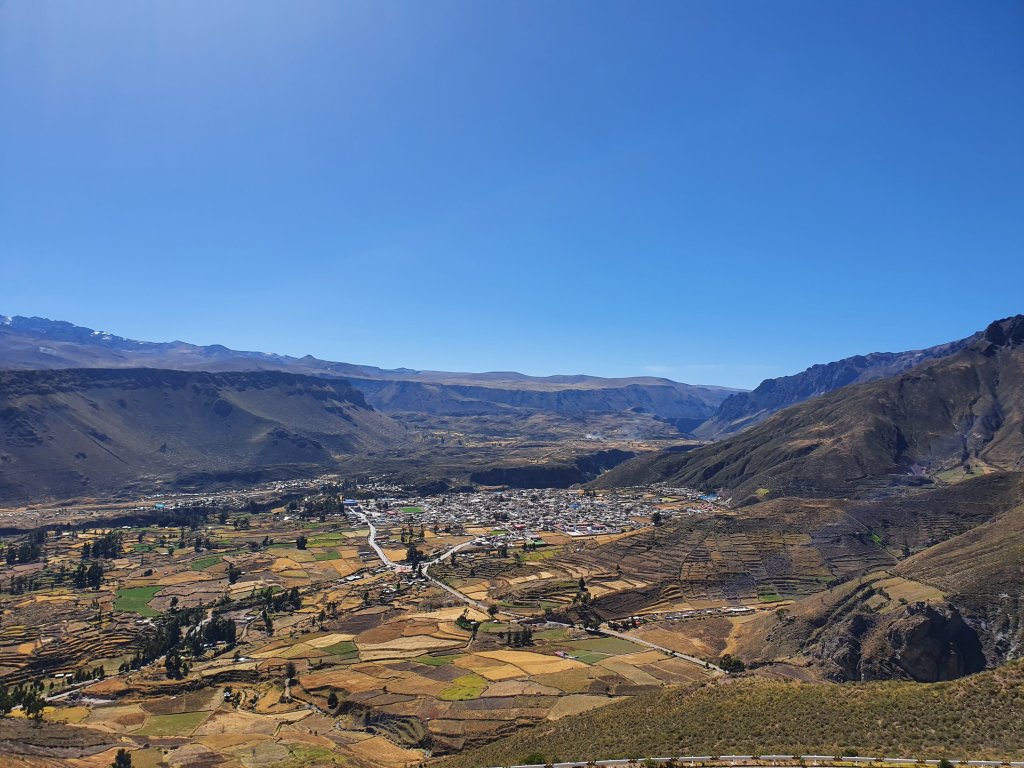
In the distance, you can also see the Mismi mountain peak at an altitude of 5597m and part of Chila mountain range. A glacial stream on Mismi is thought to be the most distant source of the Amazon River. The waters from Mismi flow into the streams Carhuasanta and Apachita, which flow into the Apurímac River, which is a tributary of the Ucayali which later joins the Marañón to form the Amazon river.

The Colca Valley is a Andean valley with pre-Inca civilisations as well as colonial towns found in Spanish times.
Around 600 AD, the Collaguas and Cabanas cultures flourished in Colca. They developed agricultural technology such as terraces on the sides of mountains to create land for farming. They also built colcas – stone reservoirs placed at higher elevations, to store grains and tubers in cold and dry conditions.
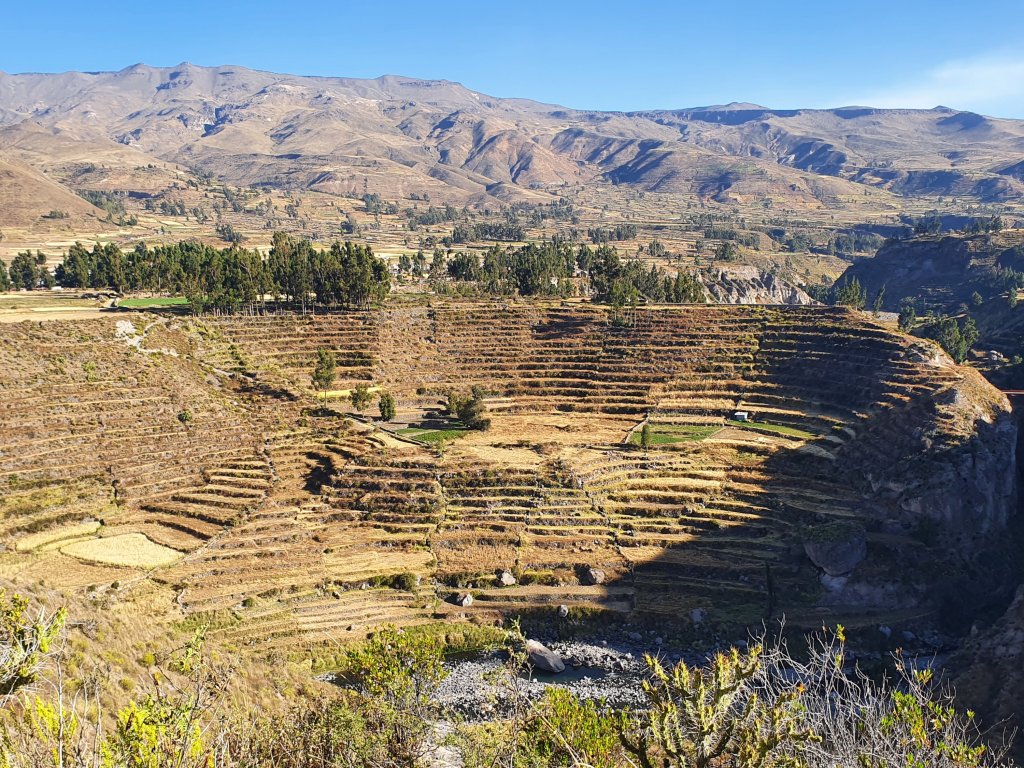
Incas arrived in the Colca Valley around 1450 AD and set about dominating and absorbing the existing tribes and their cultures. The Spanish arrival in 1532 changed things yet again. The whole of the Colca valley was given to Gonzalo Pizarro, (brother of Conquistador Francisco Pizarro) as an encomienda (a parcel of land and the labour of all the native inhabitants living in it) as a reward by the Spanish Crown for his part in the invasion.
1315: Lunch at Chivay. The Mistituris (meaning “you mix”) restaurant provides a very nice buffet lunch with some typical Peruvian and Andean dishes. I also try my first Inca Kola, which tastes a lot like cream soda.




1400: After lunch we have a bit of time to look around the centre of Chivay. Chivay is the capital of the Colca valley and a good base for exploring the region. There is a main square and a market street filled with statues of characters from local folklore.



1445: Our next stop is the small village of Coparaque. There is a main square, church and a few shops. There is also a small community centre. The church was built on top of an Inca palace that existed when the Spanish invaded.
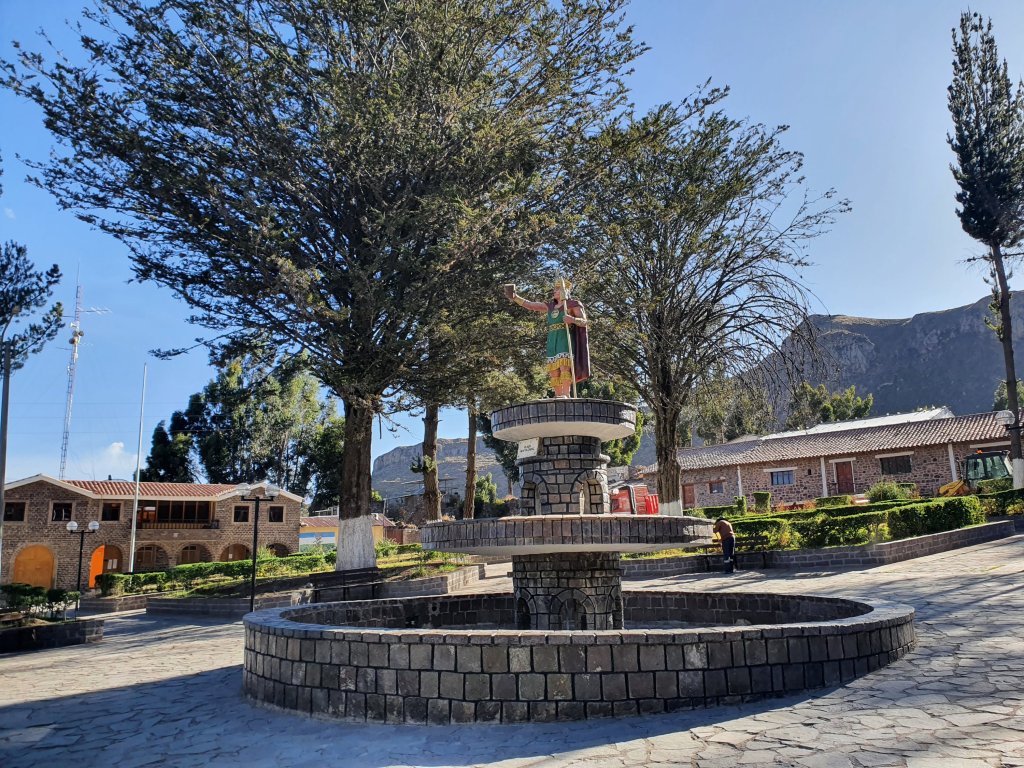
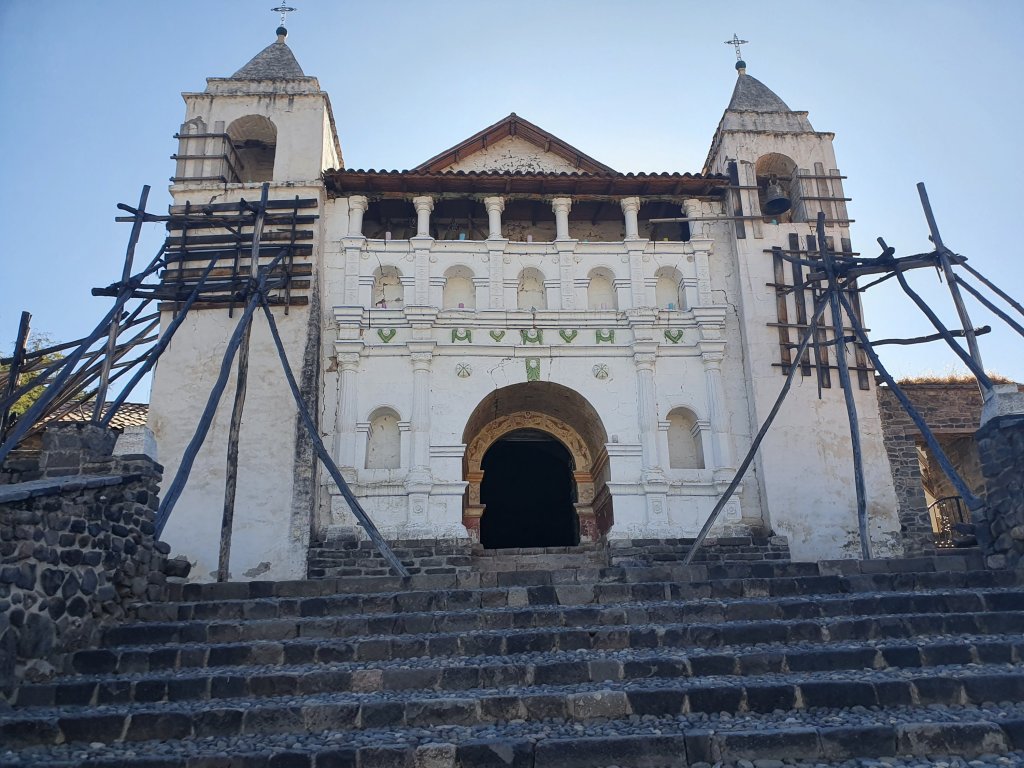
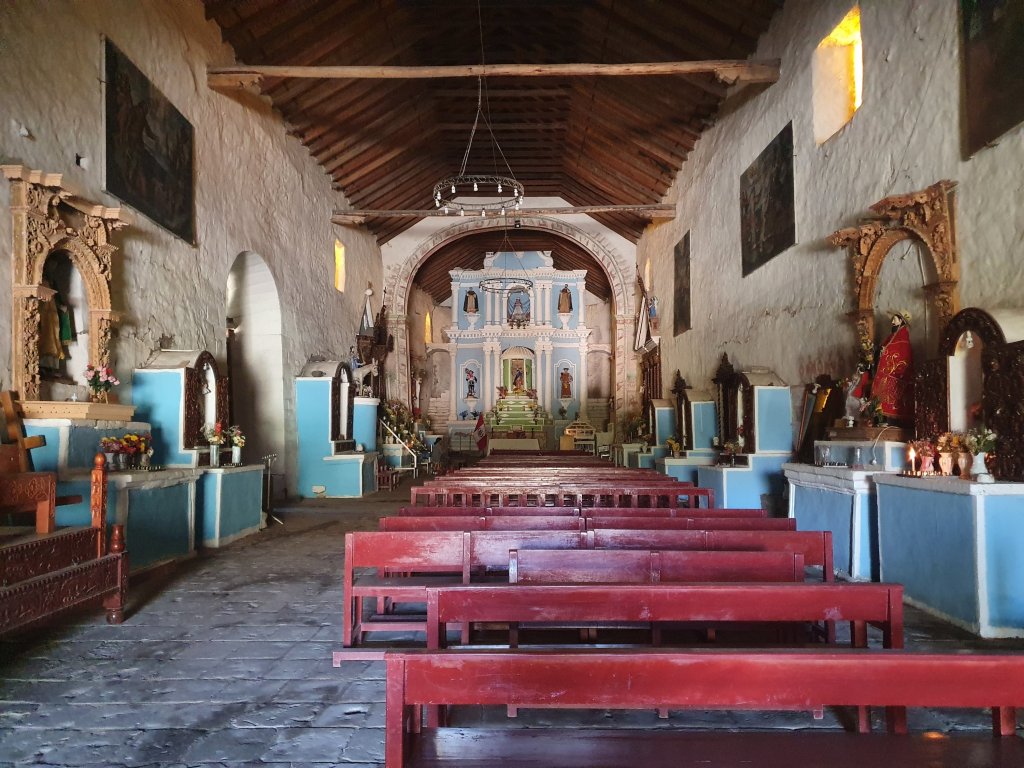
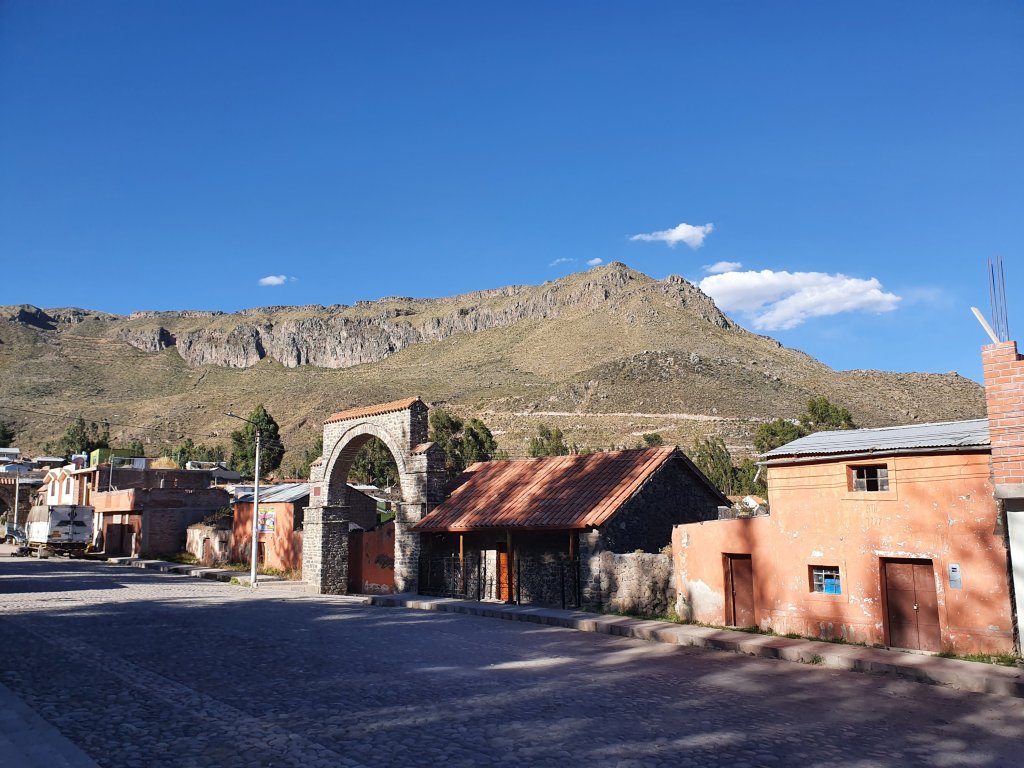
1530: Arrival at Colca Lodge. It is certainly the best hotel we’ve been to so far. It is located at elevation of 3200m.
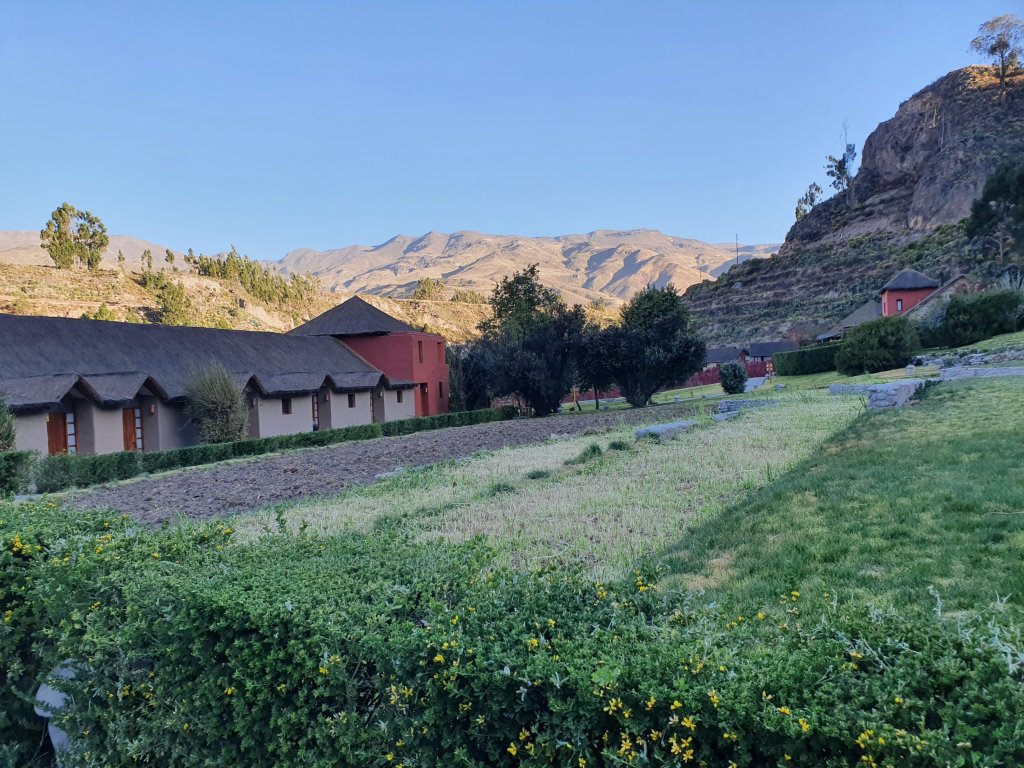
The hotel is famous for it’s hot springs – one of the fewm hotels in Colca which have hot springs in their grounds. Hotel has 3 pools with water from the hot springs at a temperature of 34 to 38 degrees Celsius. There is also one pool with a temperature of 80 degrees Celsius (not open for visitors).

The Colca river runs across the hotel grounds.

The hotel also has an alpaca and llama enclosure, where you can observe them at close quarters. There is also an education centre with information about Llamas, Alpacas and Vicunas and Condors.
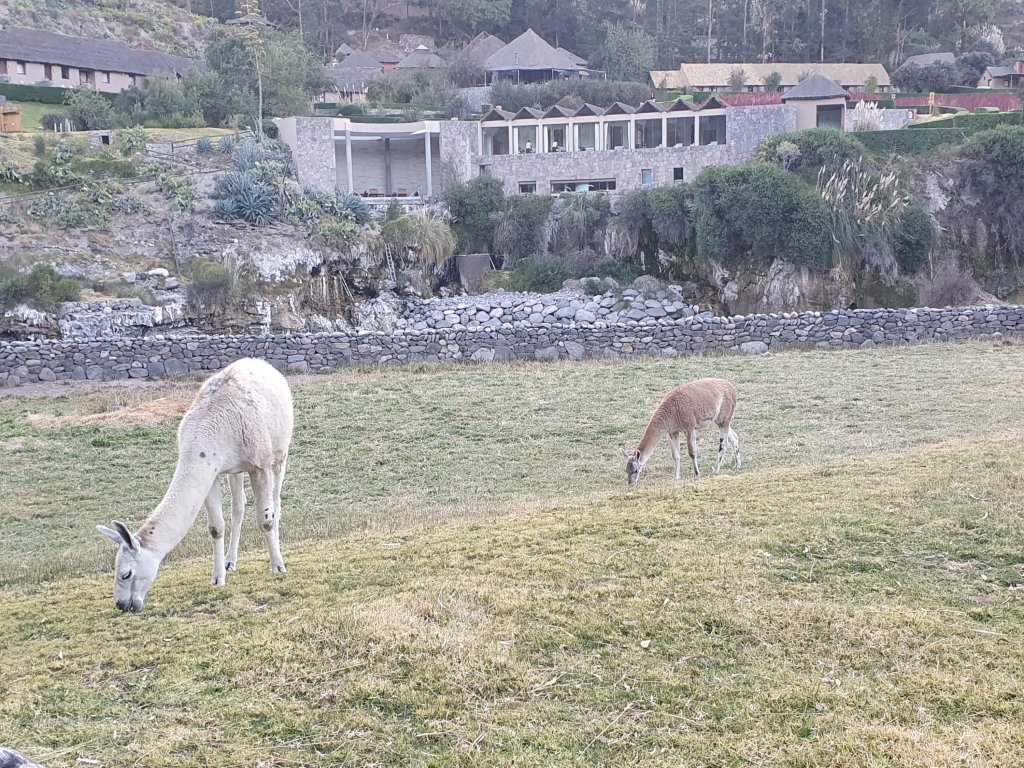

We take the rest of the afternoon off to relax in the hot springs.
2049: There is a massive noise and our whole room shakes from side to side – several times, but it is over in less than 10 seconds. We have just experienced an earthquake. Turns out it was 5.5 magnitude earthquake with the epicentre less than 10 km from us – it also explains the increase activity of Sabancaya volcano which we saw earlier today.

South of Peru is prone to geological activities, with small tremors quite common
Last time there was an earthquake of a similar magnitude was in 2016, 40 people were injured.
Although nothing fell down, the room had a few cracks in the walls and ceiling, so the hotel moved us into a different room for the night. A restless night ensued, wondering whether that was it or if it was a precursor to a bigger quake. More about what happened in my next post.

hi, what transport option did you use to get to the hotel?
LikeLiked by 1 person
We used a private guide and a car (arranged for us by the UK travel agency)
LikeLike
I love those hot springs, but I wouldn’t be able to sleep either. Scary!
LikeLiked by 1 person
🙂
LikeLiked by 1 person